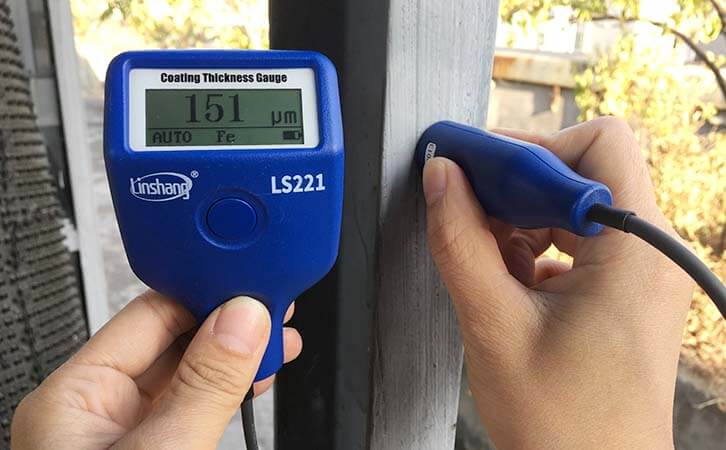Measurement and Industry Background of Powder Coatings | Powder Coating Thickness Gauge
With the extensive application of powder coatings in different industries, controlling the thickness of powder coatings on finished products has become a very important step in product quality inspection. Powder coating thickness gauge is a non-destructive measuring instrument specially used to measure the thickness of powder coatings.
1. Powder coating industry background
Powder coatings are the fastest growing of all surface treatment technologies. It is a protective paint that is durable and scratch-resistant and does not fade easily. It offers a seamless coating in different colors, textures and surfaces. Powder spraying is a cost-effective spraying method that does not require continuous coating and long-term curing. The powder particles used are a mixture of finely ground pigments and resin particles. The powder particles are transferred to the electrolytic surface. Powder spraying methods include electrostatic spraying for thin coatings (0.001 "-0.010") and fluid bed spraying for thick coatings (0.007 "-0.040").
During the curing process, the powder is melted into a smooth coating. Depending on the process, the powder can be thermally cured (convection or infrared) or UV-cured. The powders used can be thermoplastic (having the same chemical composition after reflow) or thermosetting (chemically cross-linking with themselves or other reactive components).
Powder coatings have been used on metal surfaces for more than 40 years. With the development of technology, its applications have been extended to industries such as ceramics, plastics (nylon and polycarbonate) and MDF (medium density fiberboard). Further research is underway to expand the use of powder coatings to include substrates such as hardwood, laminate flooring and particle board.
2. UV curing
Unlike heat-cured powders, UV-cured powders separate the melting and film-forming stages from the final curing stage. Short-wave infrared and convection heating allow relatively low temperatures for the melting process. The UV wavelength and time required for curing depend on the color and expected film thickness. The coating thickness can be between 20 and 100 microns (1 to 4 mils). The biggest challenges of UV curing are the current cost of the required powder and the need to position the UV light to ensure 100% coverage.
3. Why measure the thickness of powder coating?
Coating thickness within the thickness range specified by the manufacturer can ensure the best product performance. Many physical and appearance properties of the coating are affected by the thickness of the film. Film thickness will affect the color, gloss, surface profile, adhesion, flexibility, impact resistance and hardness of the coating. When the film thickness is not within the tolerance range, the fit between the parts assembled after painting may be affected. Therefore, the coating thickness must be controlled within the tolerance range allowed by the manufacturer. The powder coating thickness gauge is a special instrument for measuring the thickness of powder coatings.
Insufficient powder coatings will not provide adequate coverage and protection. For example, metals need sufficient coating thickness to adequately protect against corrosion (steel) or oxidation (aluminum). In addition, insufficient powder coating thickness may result in poor surface finish and poor appearance or color. The thickness of the powder coating may also affect the impact resistance, flexibility, hardness, edge coverage, chip resistance, weather resistance, salt spray resistance and ability to maintain gloss.
4. Powder cating thickness gauge
Powder coating thickness gauge is a non-destructive measuring instrument specially used to measure the thickness of powder coatings. Magnetic induction measurement and eddy current measurement are usually used. As a professional powder coating thickness gauge manufacturer, Linshang Technology developed the LS221 powder coating thickness gauge in compliance with the national standard "JJG-818-2005 Magnetic and Eddy Current Cover Thickness Gauge Verification Regulations" to ensure that it can pass the inspection by national authoritative metrology agency. The host and probe adopt a split design, which makes it easy to view data while testing under complex test conditions. The instrument can quickly and accurately measure coating thickness without damage. The measuring range of the instrument is 2000 microns and the accuracy is ≤ ± (3% of reading + 2μm).
- High precision coating thickness gauge for used car
- Automotive paint protection films coating thickness gauge
- Plating Thickness Measuring Instrument for Detecting Anti-corrosion Coating
- Linshang LS220, LS191, LS160A– Necessary for Car Cover Inspection
- Coating Thickness Gauge for Second Hand Vehicle
- Zero Adjustment Step of Coating Thickness Gauge
